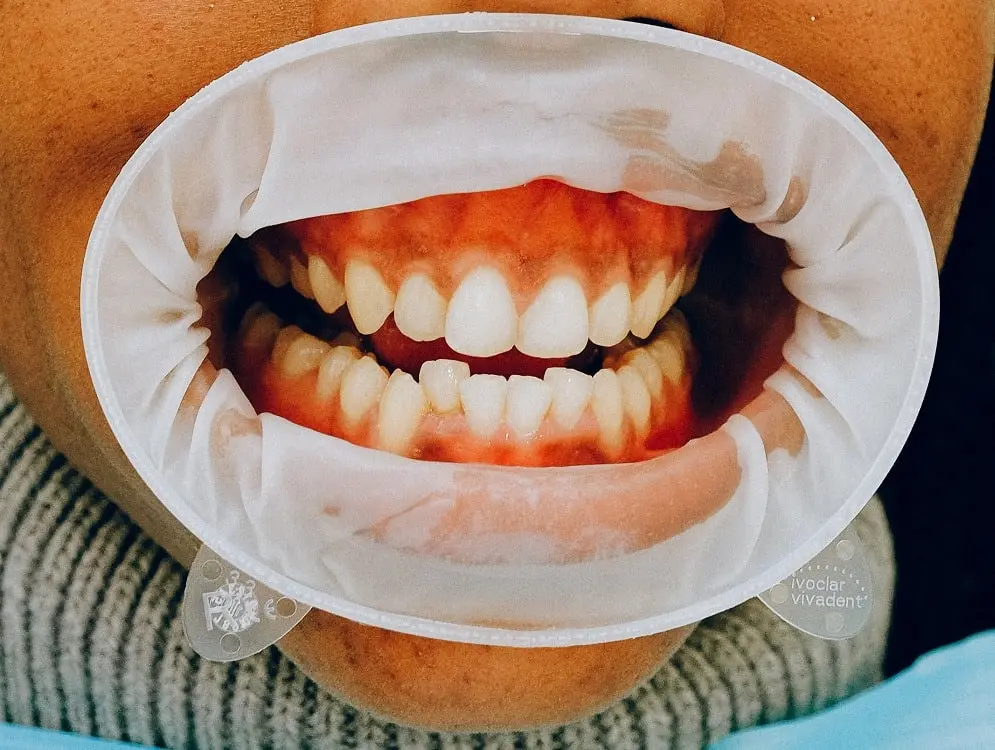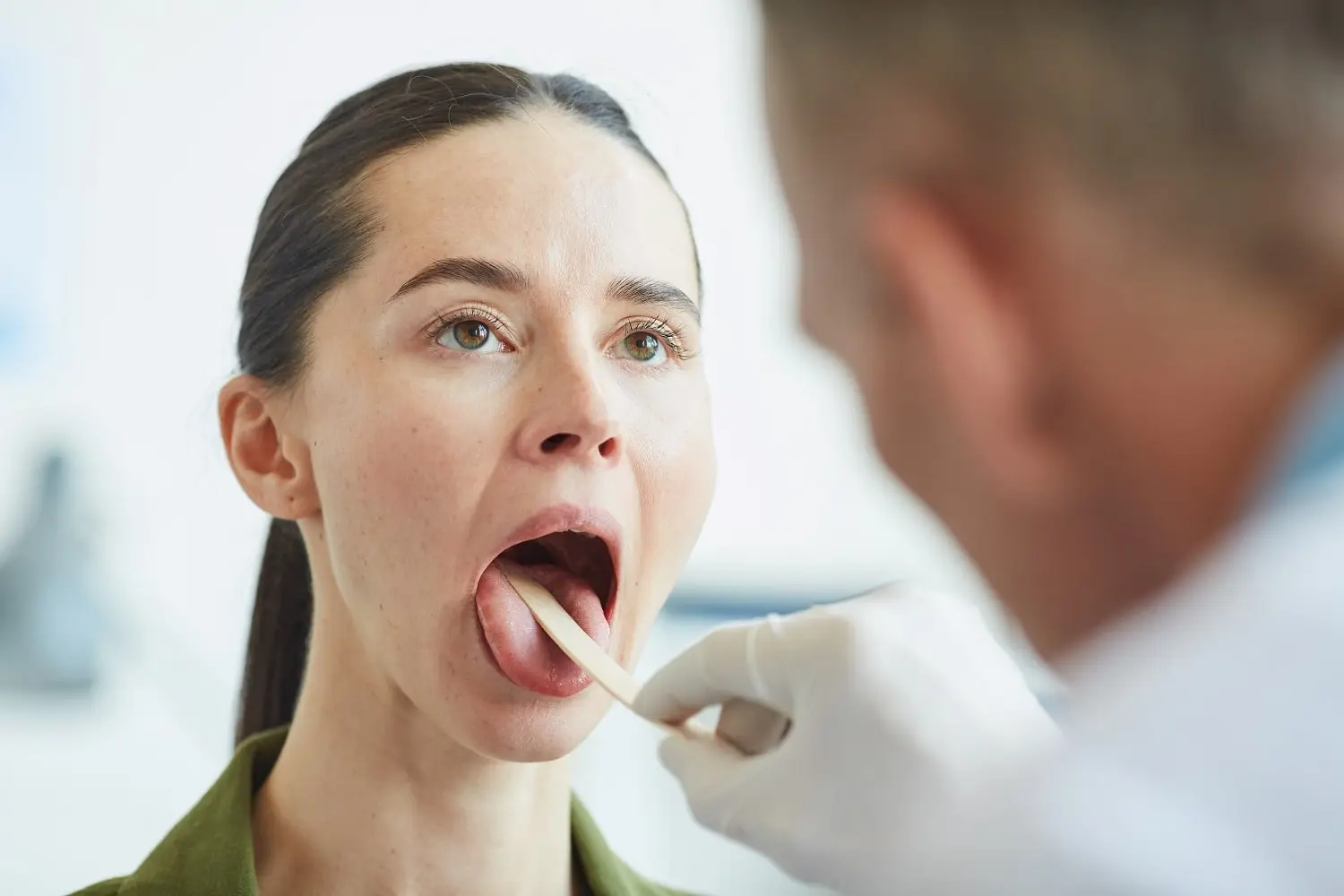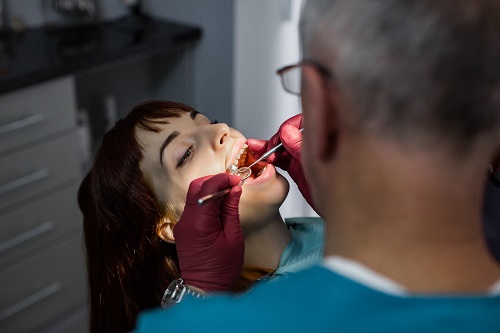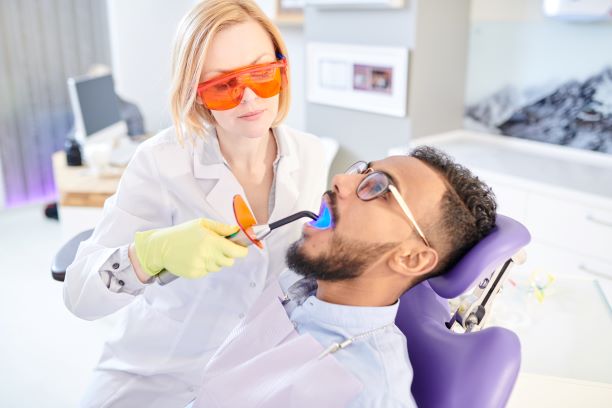Last Updated on: 5th December 2024, 10:27 am
Different Types of Gingivitis
The objective of this article is to review the main pathologies in which lesions in the gingiva may appear and, to make their study easier, there are different kinds of gingivitis: those gingival alterations that appear related to mucocutaneous diseases whose primary manifestation is the chronic desquamative gingivitis; gingival alterations related to hormonal levels, among which pregnancy gingivitis and granuloma gravidarum stand out;
gingival alterations related to pharmacological treatments such as lichenoid reactions that can manifest in the gingiva and gingival hyperplasia; gingival disorders related to viral infections (mainly HIV and the human Herpes Virus (HHV) family); gingival alterations related to blood dyscrasias, with leukemia being the central blood disorder with gingival repercussion and, finally, gingival alterations of genetic origin or hereditary gingival fibromatosis.

1. Chronic Desquamative Gingivitis
Desquamative Gingivitis is one of the main gingival abnormalities not related to plaque. It usually occurs in people over 40 years of age and has a predilection for the female sex. Initially, it is characterized by erythema of the gingiva, and in more advanced stages, spontaneous desquamation of the epithelium and areas of erosion with bleeding and moderate or severe pain are observed.
Many times, it is associated with other diseases such as Lichen Planus, Pemphigoid, Pemphigus, Lupus Erythematosus, Psoriasis, etc.
2. Pregnancy Gingivitis and Pyogenic Granuloma
The first is plaque-associated gum disease. At the gingival level, there are receptors for estrogens and progesterone, which allows these hormones to exert different effects on the gingival tissue among which are vascular, cellular, microbiological, and immunological alterations that lead to an increase in the degree of gingivitis.

Therefore, the development and maintenance of gingivitis and periodontitis during pregnancy can be explained by hormonal variations; however, in the absence of bacterial plaque, these changes cannot give rise to periodontal disease.
The second is a lesion that appears during pregnancy and is not related to plaque. It is located in the vestibular gum, and it bleeds easily due to the blood vessels there. The main etiological factor is the presence of bacterial plaque, although other factors may also appear related.
3. Drug-related Gingival Diseases
Among them, we can mention Lichenoid Reactions and Gingival Hyperplasia.
-
Lichenoid Reactions
Lichenoid reactions and Lichen Planus have similar symptoms and histopathological findings, making a differential diagnosis difficult; However, in lichenoid reactions, there is an association between the administration of a drug, contact with a metal or food, or the presence of an underlying systemic pathology, which is why the control of these factors usually achieves the resolution of the lesions.
-
Gingival Hyperplasia (GH)
Drug-induced HG was first described in 1939 in association with the chronic administration of an antiepileptic drug, phenytoin.10. Subsequently, it has also been associated with cyclosporine, an immunosuppressant used in patients with organ transplants, among others, and nifedipine, a calcium channel blocker.
Gingival hyperplasia induced by any of the drugs mentioned above is similar and occurs in 50% of patients treated with phenytoin, 30% with cyclosporine, and 20% with nifedipine, appearing more frequently in children and young people from the third month of treatment when a sufficient concentration of the drug has been reached in the gingival tissues.
4. Gingival Disease Induced by Human Immunodeficiency Virus (HIV)
Human immunodeficiency virus (HIV) disease is still the fourth leading cause of mortality in underdeveloped populations today and arguably in developed countries.
There are only three clinical presentations of periodontal disease characteristic of HIV-infected patients that differ only by the affected area: linear gingival erythema (LGE) associated more frequently with anterior teeth than posterior teeth, Does not respond well to the media plaque control, or scaling and root planing;

However, hygiene and prophylaxis measures should not be neglected, complementing them with the use of oral antiseptics; Necrotizing ulcerative gingivitis (GUN), which is more prevalent among homosexual men, is characterized by reddened gingiva with diffuse inflammation, and there is also the involvement of the interdental papilla (necrosis) and the gingival margin, even leaving areas of bone exposed due to the loss of tissues soft. The picture is accompanied by pain, malodor, intense salivation, and bleeding spontaneously or after brushing.
Finally, necrotizing ulcerative periodontitis (PUN) is much more aggressive in HIV + patients than in the seronegative population, with a higher prevalence among homosexual and bisexual men. The disease is the final phase of GUN where PUN can reach more severe stages even compared to the disease of radical destruction of soft and hard tissues called Noma.
Gingivitis Related to Human Herpes Virus type 1/2
Herpetic primary infection usually occurs in children aged one to five years, the gingival alteration of the viral origin of type VHH Type 1 is the most common, although it is generally asymptomatic. When manifestations occur, they consist of a prodromal phase with fever between 39-40ºC, general malaise, loss of appetite, decay, and large, painful lymphadenopathy
HSV-2 is transmitted sexually and leads to genital lesions, although both types can be detected in both orofacial and genital infections.
Blood Disorders Linked to Gingivitis
Leukemia
Leukemia is a malignant disease characterized by a marked increase in the number of leukocytes and their precursors in the blood leading to significant organic alterations. Oral manifestations are frequent and are sometimes an early sign that can help in early diagnosis. Due to its predisposition to infiltrating by leukemic cells, the gingiva is usually one of the most affected places, with intense inflammation and increased volume, especially in monocytic leukemia, in the absence of local irritants such as plaque or trauma. Gingival bleeding may also occur due to thrombocytopenia.
Gingivitis Related to Hereditary Factors
Hereditary gingival fibromatosis (FGH)
Hereditary gingival fibromatosis consists of an increase in the volume of the gingiva (gingival hyperplasia) that surrounds the teeth, which also have a pink color and a fibrous consistency. It has little tendency to bleed and covers part or all of the dental crowns, which can lead to functional interference during phonation and chewing, in addition to preventing lip sealing.
Gingival hyperplasia is not usually present at birth and usually begins with the eruption of the adult dentition, although it can also develop during the deciduous dentition.
Drugs That Cause Gum Disease
Antiepileptics
- Hydantoins
- Phenobarbital
- Carbamazepine
Calcium Antagonists
- Nifedipine
- Verapamil
- Diltiazem
- amlodipine
- felodipine
Immunosuppressant
- cyclosporine
Different kinds of Gingivitis Treatment

The treatment of gingival disease can be divided into either short-term treatment, which is described as a treatment aimed at treating the disease in the short term by reducing local factors such as dental plaque, infected periodontal tissue, and patient instruction, which does not lead to a cure of the disease but rather to more effective palliative treatment if the condition is in the early stages.
And long-term treatment is also called Surgical Periodontal Therapy.
Short-Term Treatment:
Short-term treatment consists of the first phase since the goal is to treat the disease by reducing the risk factors that aggravate it, for which nonsurgical periodontal therapy will be carried out.
Nonsurgical periodontal therapy includes patient motivation, plaque control, supra, and subgingival scaling, root planing, and, in addition, chemical agents. Nonsurgical therapy is an effective method for periodontal diseases. Longitudinal studies have shown that nonsurgical therapy is efficient in single and multi-root teeth, in wide and deep periodontal pockets.
We must also point out that nonsurgical periodontal treatment may not be effective in some sites and patients; therefore, the appropriate therapy will be surgical after a correct periodontal reassessment.
Long-Term Treatment:
The main goal of surgical periodontal treatment is the long-term preservation of the periodontium. Periodontal surgery can contribute to this purpose, creating accessibility for the correct scaling and root planing performed by the professional, and restoring a gingival morphology that facilitates self-control of plaque by the patient.
The various surgical techniques developed throughout time should be evaluated on the basis of their potential to facilitate the removal of subgingival deposits, as well as to facilitate self-control of the plaque and thus improve the long-term preservation of the periodontium.
The first surgical techniques used in periodontal surgery were described to gain access to the root surfaces and thus be able to debride them adequately. This access could be done without excision of the soft tissue pocket or without involving the hard tissues. Later, procedures were described whereby not only soft tissues were treated but also hard tissues. Flap surgery was performed from a simple gingivectomy that allowed the alveolar bone to be exposed and give the intervened area a physiological contour favorable to oral hygiene measures.
At the same time that new techniques emerged, new concepts emerged, such as maintaining the mucogingival complex or the possibility of regeneration of the insertion apparatus, both associated with elaborate surgical techniques.
Among them, it is worth highlighting:
- Gingivectomy Procedures
- Flap Procedures
- Regenerative Procedures
Treating Gingival Inflammation Based On Chemical Agents
Pharmacotherapy
- Amoxicillin 500 mg
- Metronidazole 500mg
- Minocycline 100mg
Treatment with Antiseptics or Mouthwashes
- CHLORHEXIDINE: mouthwashes and gels
- Cetyl Pyridinium Chloride (CPC)
- Hydrogen peroxide
Others
- Antibiotic gel: A gel that contains the antibiotic doxycycline
- Enzyme Suppressant: A low dose of the drug doxycycline that keeps the destructive enzymes under control.
How Prevent Gingivitis Naturally?

It is essential to maintain a good, complete, and balanced diet, in addition to always cleaning your teeth after each meal.
Our diet should be rich in the following foods:
- Fresh and seasonal fruit
- Vegetables and salads
- Legumes
- Whole-grain cereal (rice, millet, quinoa, oatmeal, etc.)
- Fruits and dried fruits
- Seeds (sunflower, sesame, pumpkin)
Likewise, we must eliminate ultra-processed foods, industrial pastries, sweets, and products that contain large amounts of sugars from our diet. These promote the appearance of diseases such as gingivitis, as well as cavities, and other health problems.
Contact Us
People who may be suffering from bleeding gingivae disease are recommended to take these different kinds of gingivitis from the Channel Islands Family Dental into consideration and not hesitate to seek prompt attention, and learn about the world of oral health.
At Channel Islands Family Dental Office, we will be happy to provide you with all the necessary information to decide the treatment you choose. In addition, our Dentists in Oxnard, Santa Paula, Ventura, and Port Hueneme will be able to guide you toward the best treatment to restore your best smile.



